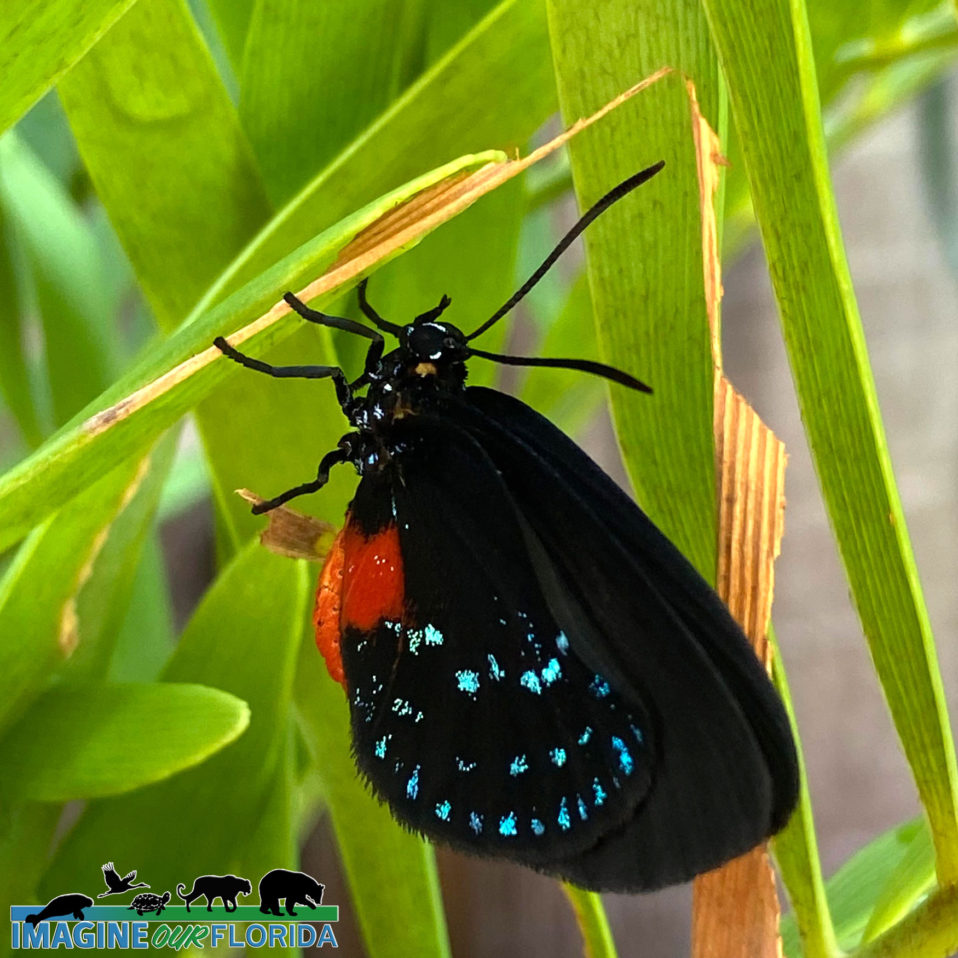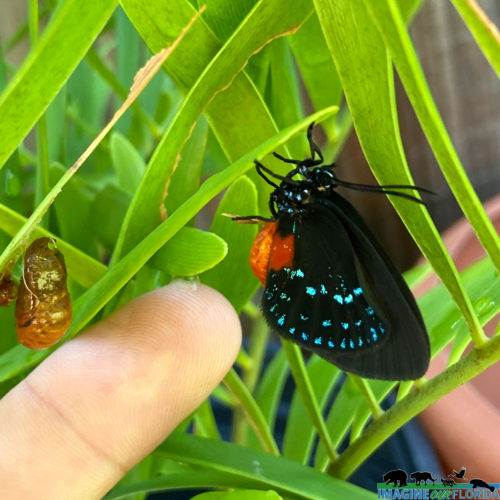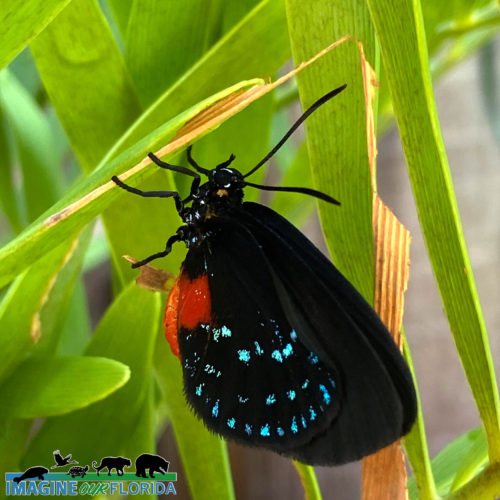The Atala butterfly, Eumaeus atala Poey, was considered extinct from 1937 – 1959. Its host plant, coontie (Zamia integrifolia Linnaeus. f.) was once overharvested by settlers for starch. Today, sightings of Atala butterflies are still rare. The butterfly naturally resides in Palm Beach, Broward, and Miami-Dade counties and has been introduced into Collier, Martin, and Monroe counties.
The Atala butterfly is a hairstreak whose wing measures 3/4 – 1 inch. An iridescent teal ring encircles the eyes, and three rows of iridescent teal dots are found on the wings. The butterfly has a bright red spot on the underside and a reddish-orange abdomen. The bright colors on both the adult butterfly and the caterpillar are a warning of toxicity to predators who might eat them.
Female Atala butterflies lay a cluster of around 60 eggs on the coontie’s new leaves. The 1-inch caterpillars are bright red with 2 rows of yellow dots. Adult Atala butterflies may live up to three weeks.
Atala caterpillars destroy the foliage of the coontie, but this hasn’t stopped homeowners and gardeners from planting the native plant. The caterpillar’s fecal droppings provide a perfect natural fertilizer for the coontie plant. The Atala butterfly reminds us to #PlantNative




Recent Comments